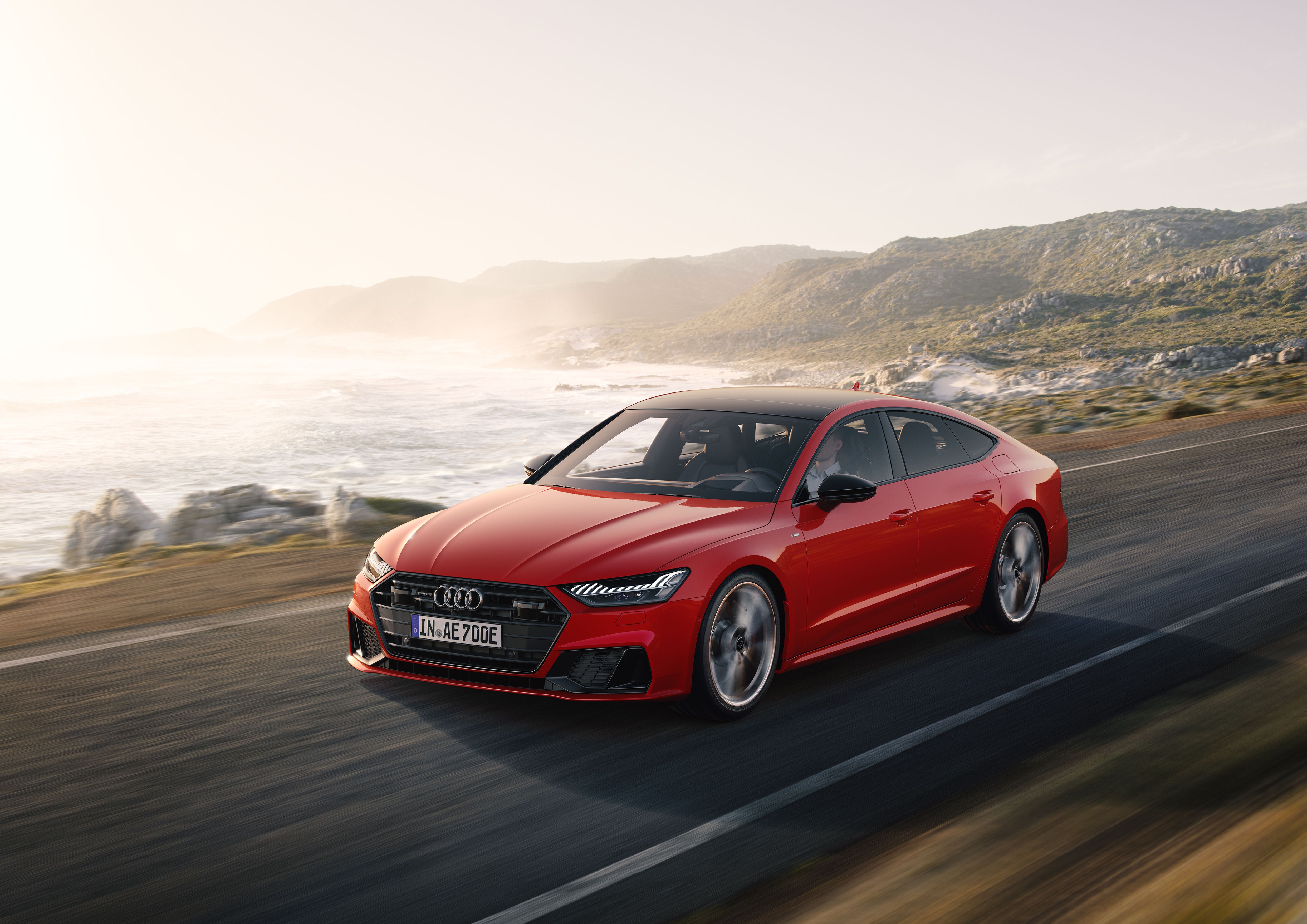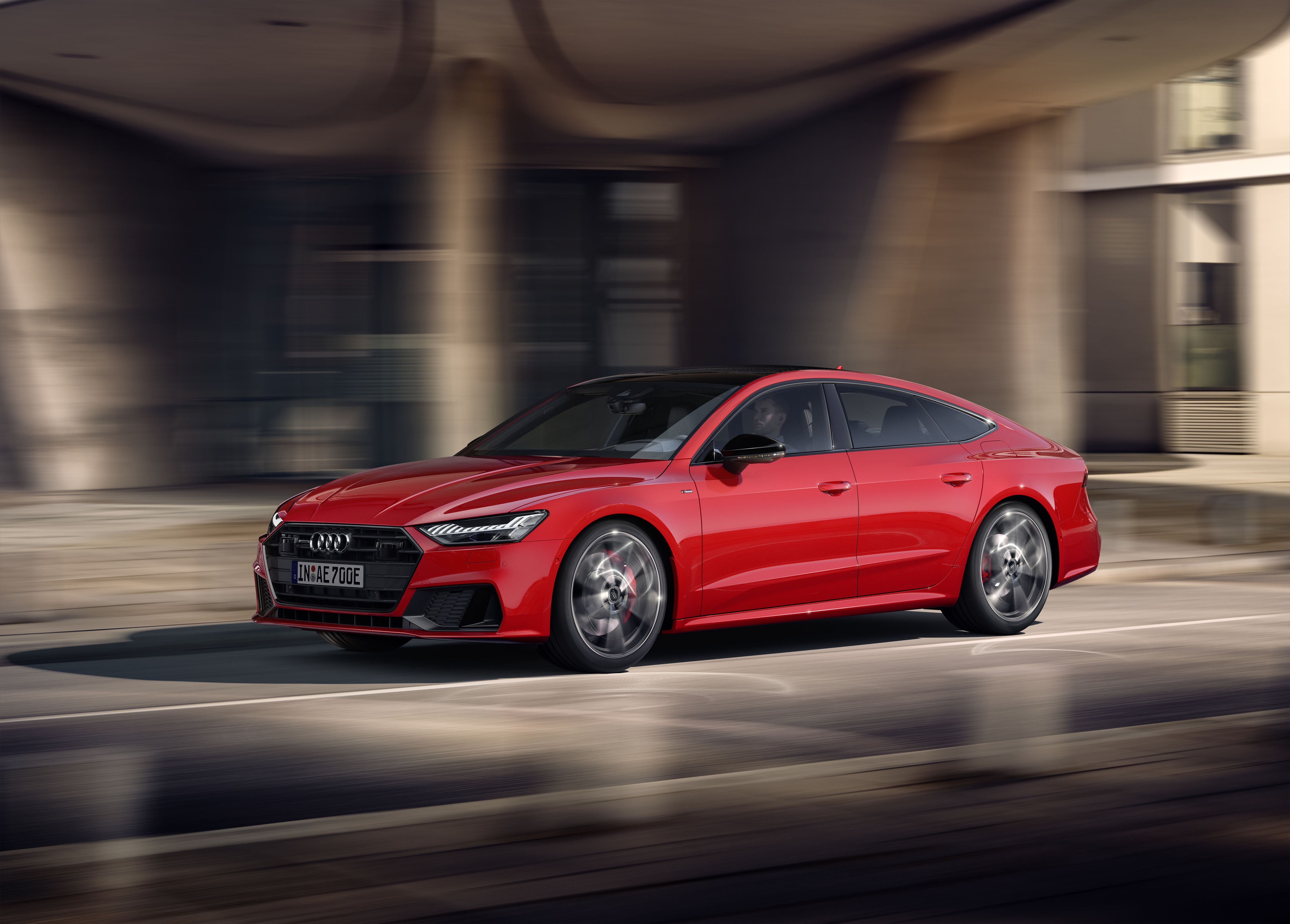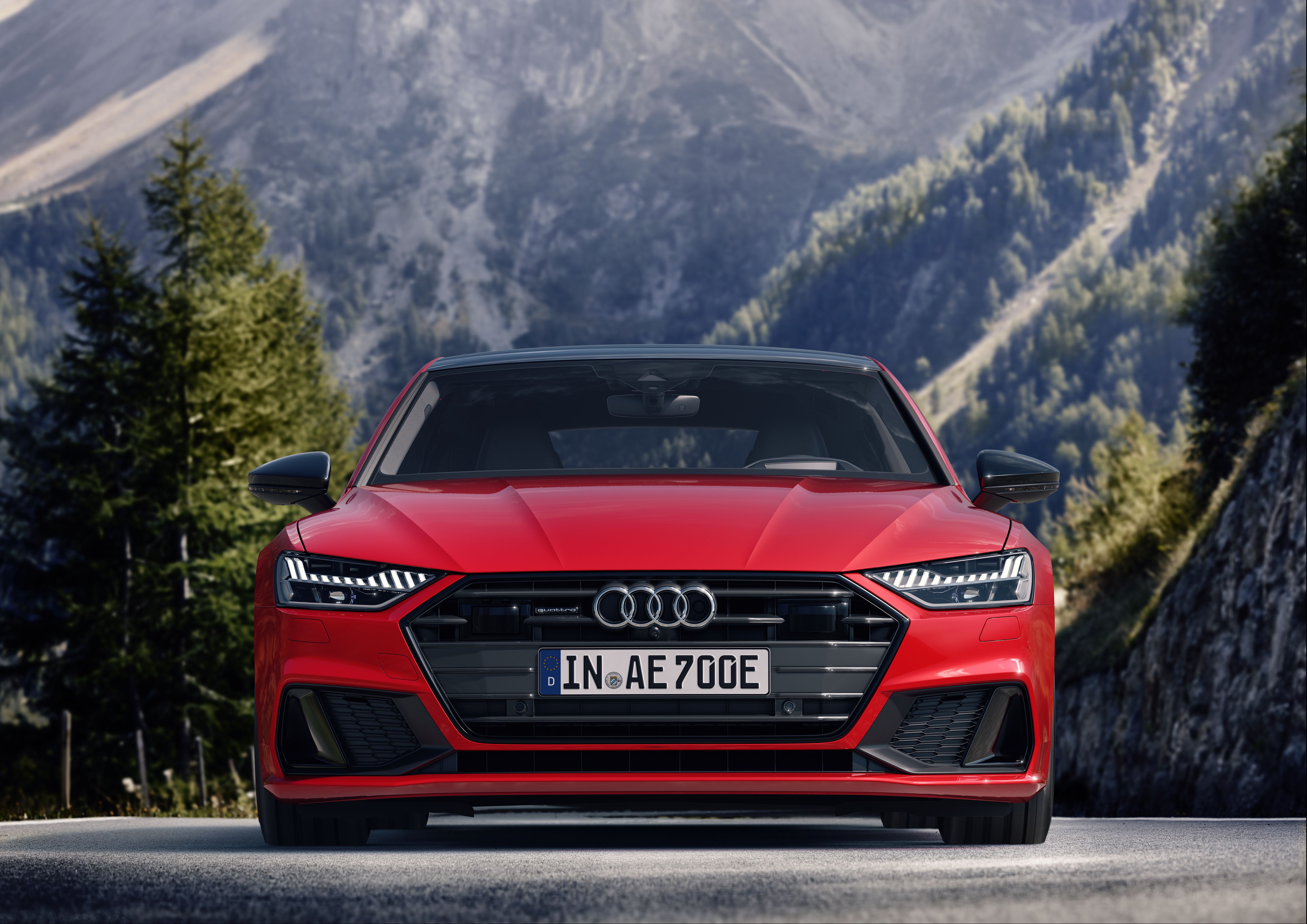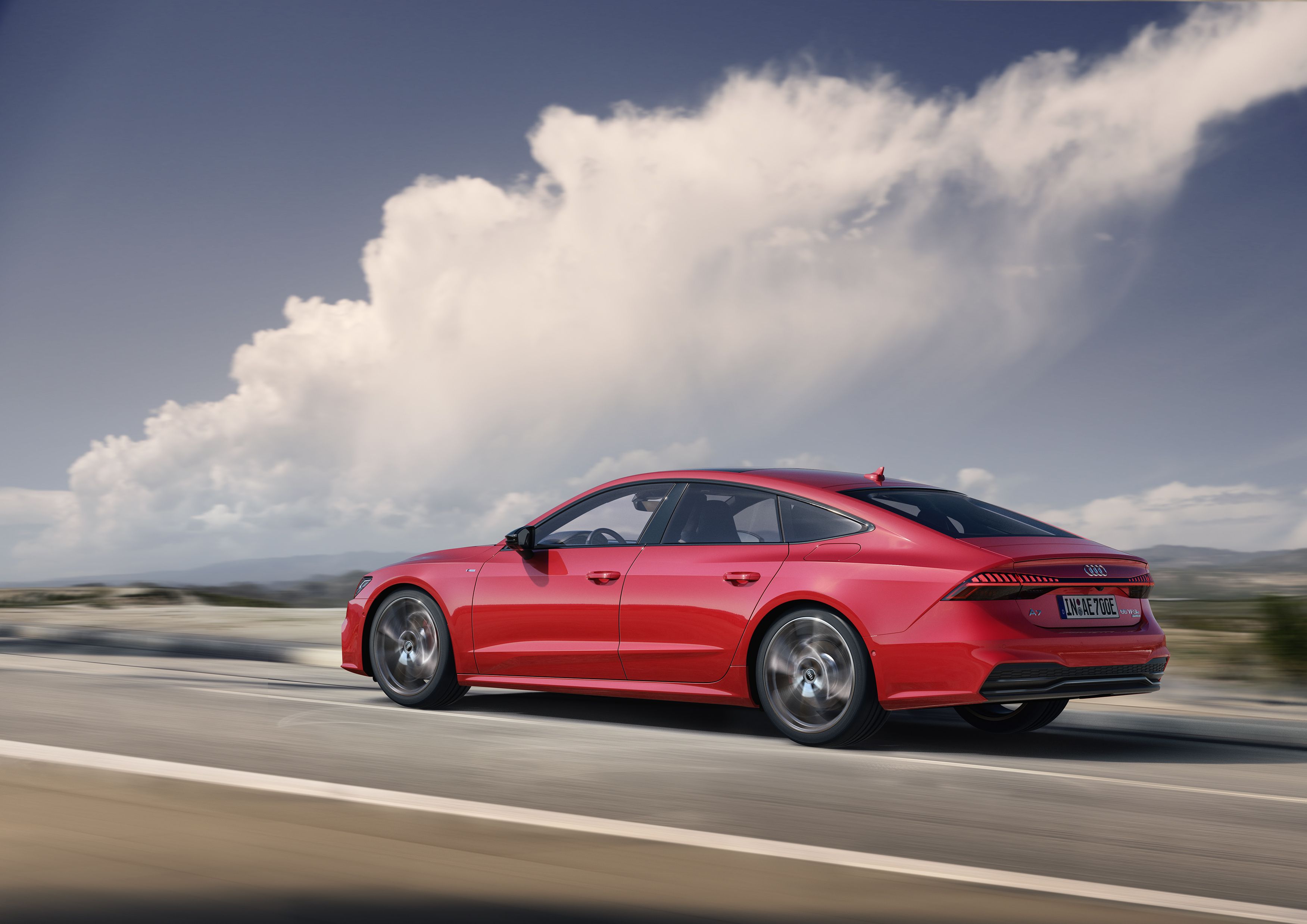The current Audi A7 is a real looker, it offers pretty decent performance for a car its size, and you can’t argue with its interior quality of technology. But, the one technology it wasn’t privy to was electrification. Well, not at least until now, anyway. That’s right, folks, Audi has just introduced the A7 Sportback 55 TFSI E Quattro PHEV. What does that mean for performance and fuel economy? Well, Audi didn’t just toss in an electric motor and battery – there are some serious changes here, and you should probably be aware of them.
The Audi A7 E Quattro PHEV Doesn’t Have the Same Engine
It would be easy to assume that Audi could just cram a battery pack and electric motor into the A7’s chassis and boost either performance or fuel economy, but that isn’t the case. While the rest of the A7 lineup features a 3.0-liter six-cylinder, the E Quattro PHEV has a 2.0-liter, turbocharged, four-cylinder that’s good for no more than 248 horsepower. For those of you that are uninformed, that’s a staggering 87 horsepower less than the standard A7’s six-pot.
Not all is lost, though, as the electric motor nestled in with the four-banger and the seven-speed automatic transmission is capable of pushing 141 horsepower.
The Cost of Going Electric? 0.5 Seconds
Despite the increase in total horsepower, the A7 E Quattro is actually slower to the 60-mph benchmark by half a second – 5.2 seconds in the standard A7 vs. 5.7 seconds in the E Quattro. You can thank the 14.1 kWh battery pack that adds an undisclosed amount of weight for the drop in performance. That battery has been positioned below the rear cargo area. Audi says there isn’t a step within the cargo area and total capacity with the rear seats folded is some 43.6 cubic-feet.
The A7 E Quattro Has 25 Miles of All-Electric Range and Ridiculous Fuel Economy
Let me come right out an tell you that Audi is promising up to 25 miles of all-electric range at speeds of up to 84 mph. So, if you have a short commute, you can – in theory – make your trip to and from work without using a drop of gasoline.
On that note, charging isn’t that big of a deal either. First off, the electric motor handles most of the “light” braking and turns that into juice to charge the battery. When you plug the A7 in at home or work, it can take a full charge in some 2.5 hours on a three-phase, CEE, 400-Volt charging system (you probably don’t have one at home or work) or 7 hours at home on a 230-volt outlet. Whether or not the new A7 E Quattro can maintain the seemingly outrageous fuel economy figures or is worth the drop in performance remains to be seen, but there’s one more thing you need to know before you run out to your Audi dealer to order one up…
The Audi A7 E Quattro Doesn’t Come Cheap
To be honest, the A7 E Quattro is the opposite of cheap. The ICE-Powered A7 Premium starts out at $68,000, the Premium Plus carries a sticker of $72,400, and the A7 Prestige commands $76,300. But, that A7 E Quattro that you’ve been eyeballing for the last 10 minutes?
|
Audi A7 Premium |
$68,000 |
|---|---|
|
Audi A7 Premium Plus |
$72,400 |
|
Audi A7 Prestige |
$76,300 |
|
Audi A7 Sportback 55 TFSI E Quattro PHEV |
$86,100 |
Further reading
Read our full review on the 2019 Audi A7.




